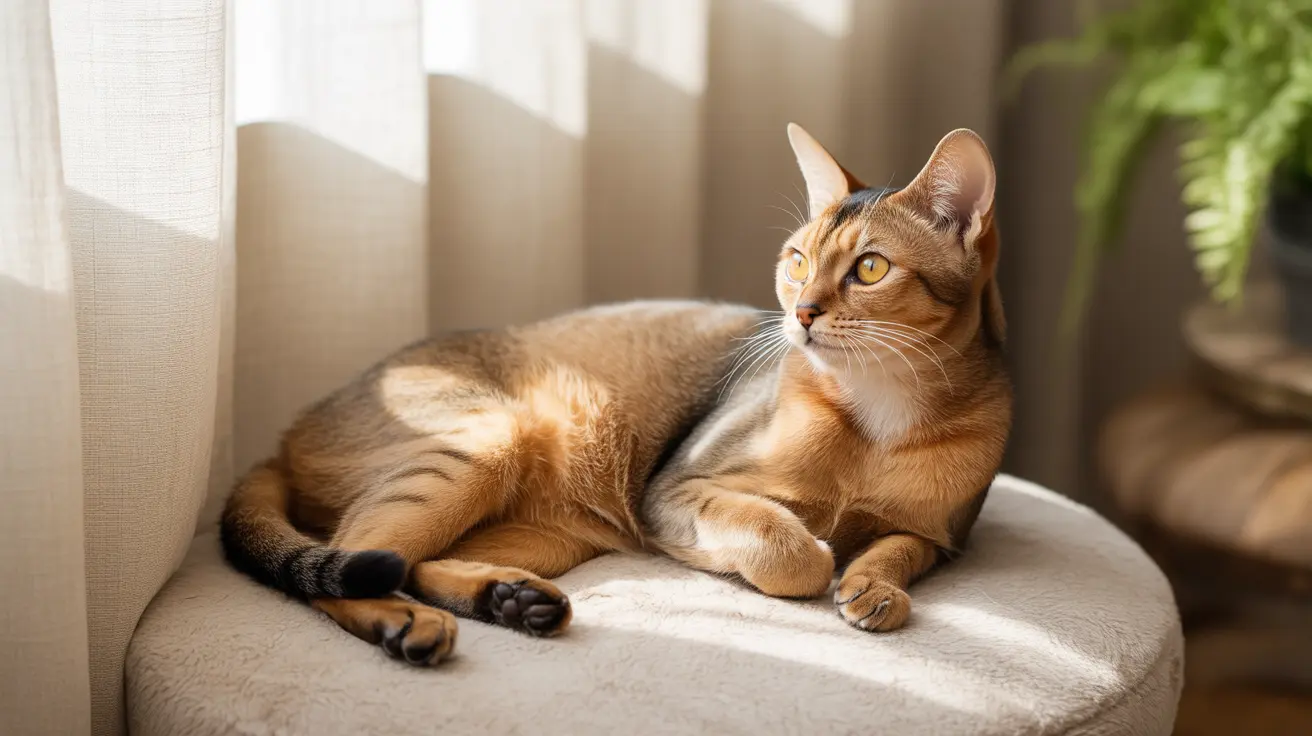The Somali cat, often dubbed the "fox cat" due to its distinctive appearance, is renowned for its stunning array of coat colors and patterns. These elegant felines showcase a unique ticked tabby pattern that gives their semi-long fur a shimmering, wild appearance reminiscent of their distant African ancestors.
In this comprehensive guide, we'll explore the fascinating world of Somali cat colors, from the classic ruddy coat to rare variations, and understand what makes these cats truly special in the feline world.
Standard Somali Cat Colors
The most commonly recognized Somali cat colors form the foundation of the breed standard:
Ruddy (Usual)
The ruddy coat is the original and most traditional Somali color. It features a rich, warm brown base with black ticking, creating a wild, sophisticated appearance. The belly and undersides typically show a lighter, warmer tone, while the spine, tail tip, and facial markings display darker emphasis.
Red (Sorrel/Cinnamon)
This striking variation presents a warm, coppery red base coat with chocolate brown ticking. The overall effect is a glowing, vibrant appearance that catches the light beautifully. Red Somalis often have copper or gold-colored eyes that complement their fiery coats.
Blue
Blue Somalis display a cool, silvery blue-grey base coat with darker blue-grey ticking. Their unique coloring often features an oatmeal or pale peach undercoat, creating a sophisticated, misty appearance that many cat enthusiasts adore.
Fawn
The fawn coloration presents as a delicate, light beige with warm undertones, accented by dove-brown ticking. This subtle yet elegant color variation gives these cats a soft, gentle appearance while maintaining the breed's characteristic wild look.
Silver Variations and Rare Colors
Beyond the standard colors, Somali cats can display several distinctive variations:
Silver Series
Each main color has a silver variant, created by a gene that inhibits pigment near the hair base. This produces a striking contrast between the silvery-white undercoat and the ticked outer coat.
Rare Variations
- Chocolate: Rich brown ticking over a light apricot base
- Lilac: Delicate pinkish-grey ticking with cream undertones
- Cream: Soft cream base with subtle golden or apricot ticking
- Tortoiseshell: Various color combinations with distinctive patching
Coat Development and Maintenance
Somali kittens are born with relatively muted colors that develop and intensify as they mature. The full glory of their adult coat typically emerges by 18 months of age, revealing the true depth and richness of their coloring.
Despite their luxurious appearance, Somali cats require moderate grooming maintenance. Weekly brushing sessions help prevent tangles and distribute natural oils throughout their silky coat, maintaining its characteristic shine and healthy appearance.
Frequently Asked Questions
What are the officially recognized coat colors and patterns of Somali cats?
Somali cats are officially recognized in four main colors: ruddy (usual), red (sorrel/cinnamon), blue, and fawn. Each color can also appear in silver variants. All Somalis display the distinctive ticked tabby pattern, with some registries recognizing up to 28 color variations.
How does the ticked tabby pattern affect the appearance of a Somali cat's coat?
The ticked tabby pattern creates bands of color on each individual hair shaft, with 4-20 alternating light and dark bands. This unique pattern creates a shimmering effect in natural light and gives Somalis their distinctive wild appearance.
Do Somali cat kittens' colors change as they grow, and when do their true colors appear?
Yes, Somali kittens are born with muted colors that develop and intensify as they mature. Their true adult coloration typically finalizes around 18 months of age, revealing the full depth and richness of their coat.
Which Somali cat colors are considered rare, and how do they differ from the common colors?
Chocolate, lilac, and cream are considered rare Somali colors. These variations feature unique combinations of base colors and ticking, with chocolate showing dark brown ticking over apricot, lilac displaying pinkish-grey tones, and cream featuring subtle golden ticking over a pale base.
How should I groom a Somali cat to maintain its silky, semi-long coat and vibrant colors?
Regular weekly brushing with a soft-bristled brush is essential for maintaining a Somali's coat. Focus on preventing tangles and distributing natural oils throughout the fur. During shedding seasons, increase brushing frequency to twice weekly. Occasional baths may be necessary, but their fine coat typically stays clean with regular brushing.






